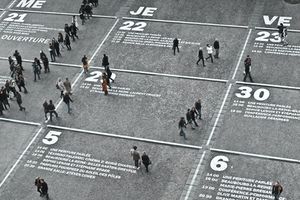Post Covid-19: Outpatient Assessment
Original Editor -Selena Horner
Top Contributors - Selena Horner and Kim Jackson
Prior to Scheduling[edit | edit source]
A few questions may be important to consider prior to scheduling a new patient.
Was the patient hospitalized for COVID-19? If no, when was the onset of symptoms? When was the last day of symptoms? If patient not sure of last day of symptoms, when was the last day of the fever?
If the patient was hospitalized, when was the patient discharged? Where diagnostic tests done to determine if the patient was COVID-19 negative?
Rationale[edit | edit source]
Currently, there are no guidelines on probability of reinfection. It seems the best evidence we currently have focuses on viral loads. The highest level of viral shedding seems to occur when asymptomatic or with mild symptoms. Viral RNA can be found in oral swabs, anal swabs and blood of individuals who are infected with COVID-19.[1] A patient discharged with a negative oral swab may continue to be shedding the virus. The change in shedding may change from predominantly oral to fecal.[1] Prior to treating a patient with post-COVID-19, the physical therapist may need to apply the responses about the patient's timing of COVID-19 in order to be adequately prepared to assist the patient.
For 30% of the hospitalized patients, positive oropharyngeal saliva samples occurred 20 days after onset.[2] In another study using reverse transcription polymerase chain reaction (RT-PCR), positive tests were also found. Patients who had a high severity presentation (respiratory distress, resting oxygen saturation <93% or other significant complications) continued to test positive for 10 or more days post onset.[3] For 90% of patients who were viewed as having mild cases, negative RT-PCR results occurred by day 10 post onset.[3]
The goal of questioning is to estimate the patient's current viral load. It has been documented that an asymptomatic patient has the same viral load as a symptomatic patient.[4]
The science around learning more about reinfection is quite fluid. At the moment there are no definitive answers.
In the United States of America, the Centers for Disease Control and Prevention outlines guidance when no testing has been performed. It is currently believed that if the patient has not had a fever for the last 3 days (and not taking any fever-relieving medications), no longer has any respiratory symptoms (shortness of breath or cough) and it has been at least 7 days since the onset of symptoms, it is no longer recommended to take precautions to limit the spread of the illness.[5]
It seems it may be prudent to determine the risk of transmission based on whether the patient had mild symptoms (with or without hospitalization) or was hospitalized. If hospitalized and viewed as being severe, the patient may continue to to have viral RNA even 20 days after onset of symptoms. What is not known at this time is whether the viral load is high enough to warrant precautions.
Special Questions[edit | edit source]
In order to prepare for the subjective patient intake, a few additional questions will assist with determining what measurement and screening tools will be helpful for the individual patient.
- Was the patient on a ventilator?
- Was the patient diagnosed with pneumonia?
- Is the patient noting changes in sleep habits?
- Is the patient noting cognitive changes?
Subjective Patient Intake[edit | edit source]
COVID-19 has increased our awareness of communicable diseases. Based on the lack of definitive evidence surrounding reinfection, outpatient processes may change. Much of the subjective information required to assess patients can be attained electronically. If organizations have secure systems in place and if the patient has access to email or the internet, a physical therapist may employ an electronic method to obtain subjective information.[6]
A review of systems will provide information[7] on the extent of the lasting effects from COVID-19. Although a patient may have been hospitalized and required a mechanical ventilator, the patient may be presenting for services for more than just lung problems.[8]
The patient may present with generalized functional limitations. Patient reported outcome measures that may be used to measure and monitor functional status include Patient-Reported Outcomes Measurement Information System (PROMIS) Physical Function (PF)[9] or the WHOQOL-BREF or any other generalized measurement tool that assesses physical function or multiple domains.
The patient may have sleep disturbances. The PROMIS bank version1.0 - Sleep Disturbances may help assess quality of sleep.[10]
The patient may present with a mood disorder such as depression. The Patient Health Questionnaire-9 (PHQ-9) may be used to screen for depression.
If it seems the patient may have cognitive deficits, the Saint Louis University Mental Status Exam may help highlight regions of deficits.[11]
If the patient was hospitalized and ventilated, this patient may also present with post traumatic stress disorder. One quick screening tool available is the Primary Care PTSD for DSM-5 (PC-PTSD-5).[12]
Investigations[edit | edit source]
- Laboratory results
- Radiograph results
- Breathing test results
Objective[edit | edit source]
Observation[edit | edit source]
- Posture
- Gait (use of assistive devices) and quality of gait
- Unsteadiness (quick grasp of balance deficits)
- Facial expressions of discomfort
- Ease of changing positions
Functional Tests[edit | edit source]
Palpation[edit | edit source]
- supine
- prone
- seated
Neurologic Assessment[edit | edit source]
Movement Testing[edit | edit source]
- AROM, PROM, and Overpressure
- Passive Intervertebral Motion
- Muscle Strength
Special Tests[edit | edit source]
References[edit | edit source]
- ↑ 1.0 1.1 Zhang W, Du RH, Li B, Zheng XS, Yang XL, Hu B, Wang YY, Xiao GF, Yan B, Shi ZL, Zhou P. Molecular and serological investigation of 2019-nCoV infected patients: implication of multiple shedding routes. Emerging microbes & infections. 2020 Jan 1;9(1):386-9. Available at: https://www.ncbi.nlm.nih.gov/pmc/articles/PMC7048229/ [Accessed on 4 April 2020].
- ↑ To KK, Tsang OT, Leung WS, Tam AR, Wu TC, Lung DC, Yip CC, Cai JP, Chan JM, Chik TS, Lau DP. Temporal profiles of viral load in posterior oropharyngeal saliva samples and serum antibody responses during infection by SARS-CoV-2: an observational cohort study. The Lancet Infectious Diseases. 2020 Mar 23. Available at: https://www.thelancet.com/journals/laninf/article/PIIS1473-3099(20)30196-1/fulltext#seccestitle80 [Accessed on 9 April 2020].
- ↑ 3.0 3.1 Liu Y, Yan LM, Wan L, Xiang TX, Le A, Liu JM, Peiris M, Poon LL, Zhang W. Viral dynamics in mild and severe cases of COVID-19. The Lancet Infectious Diseases. 2020 Mar 19. Available at: https://www.thelancet.com/journals/laninf/article/PIIS1473-3099(20)30232-2/fulltext [Accessed on 9 April 2020].
- ↑ Zou L, Ruan F, Huang M, Liang L, Huang H, Hong Z, Yu J, Kang M, Song Y, Xia J, Guo Q. SARS-CoV-2 viral load in upper respiratory specimens of infected patients. New England Journal of Medicine. 2020 Mar 19;382(12):1177-9. Available at: https://www.nejm.org/doi/full/10.1056/NEJMc2001737 [Accessed on 9 April 2020].
- ↑ Centers for Disease Control and Prevention. Discontinuation of Transmission-Based Precautions and Disposition of Patients with COVID-19 in Healthcare Settings (Interim Guidance). Available from: https://www.cdc.gov/coronavirus/2019-ncov/hcp/disposition-hospitalized-patients.html [Accessed 4 April 2020].
- ↑ Irizarry T, Dabbs AD, Curran CR. Patient portals and patient engagement: a state of the science review. Journal of medical Internet research. 2015;17(6):e148. Available at: https://www.ncbi.nlm.nih.gov/pmc/articles/PMC4526960/ [Accessed on 9 April 2020].
- ↑ Phillips A, Frank A, Loftin C, Shepherd S. A Detailed Review of Systems: An Educational Feature. The Journal for Nurse Practitioners. 2017 Nov 1;13(10):681-6. Available at: https://www.npjournal.org/article/S1555-4155(17)30701-8/abstract [Accessed on 9 April 2020].
- ↑ Lai CC, Liu YH, Wang CY, Wang YH, Hsueh SC, Yen MY, Ko WC, Hsueh PR. Asymptomatic carrier state, acute respiratory disease, and pneumonia due to severe acute respiratory syndrome coronavirus 2 (SARSCoV-2): Facts and myths. Journal of Microbiology, Immunology and Infection. 2020 Mar 4. Available at: https://www.sciencedirect.com/science/article/pii/S1684118220300402?via%3Dihub [Accessed on 9 April 2020].
- ↑ Rose M, Bjorner JB, Gandek B, Bruce B, Fries JF, Ware Jr JE. The PROMIS Physical Function item bank was calibrated to a standardized metric and shown to improve measurement efficiency. Journal of clinical epidemiology. 2014 May 1;67(5):516-26. Available at: https://www.ncbi.nlm.nih.gov/pmc/articles/PMC4465404/ [Accessed on 9 April 2020].
- ↑ Health Measures. PROMIS Bank v1.0 - Sleep Disturbance. Available from: http://www.healthmeasures.net/index.php?option=com_instruments&view=measure&id=70&Itemid=992 [Accessed on 9 April 2020].
- ↑ Shirley Ryan Ability Lab. Saint Louis University Mental Status Exam. Available at: https://www.sralab.org/rehabilitation-measures/saint-louis-university-mental-status-exam [Accessed 9 April 2020].
- ↑ U.S. Department of Veterans Affairs. Primary Care PTSD for DSM-5 (PC-PTSD-5). Available at: https://www.ptsd.va.gov/professional/assessment/screens/pc-ptsd.asp [Accessed on 9 April 2020].








